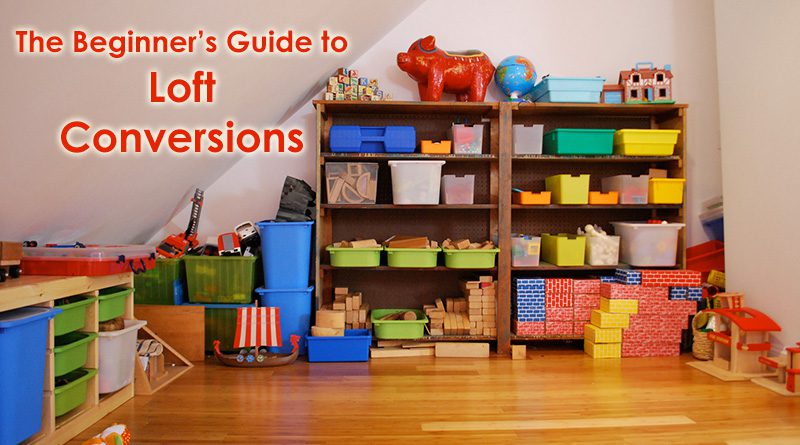The Beginner’s Guide to Loft Conversions
What if you had just one more room in your home? What would you use it for? Some peaceful office space to help you work from home without distractions? A playroom for the children so that their toys aren’t scattered around for everyone to trip on? A plush new bathroom to relax in?

Whatever you need, your loft space could well be the key to getting it. If you fancy making the most of your loft space, here’s what you need to know about conversion projects:
Have you got the space?
There’s little point getting too far down the line if your loft space simply isn’t big enough to be transformed. Duncan Binnie, of the Federation of Master Builders, reckons there are three major things to check out. Firstly, you should take the measurement between the bottom of the timber to the top of the ceiling joist. Itneeds to be at least 2.2m to make a viable room. The pitch needs to be at an angle of at least 30 degrees while the space itself should measure about 5.5mx7.5m. If you don’t have the right amount of space you can engineer some more but you need to be aware that this will make the project trickier and, importantly, more expensive.
Are you clear on what you want it for?
We’ve already listed three of the most common uses for loft conversions above but it’s important to settle on something specific before you begin. You’ll need plumbing work if you’re wanting a bath/toilet up there or you might want a Velux cabrio balcony fitting into your office so you can step outside and get some fresh air for a break. In short, the design, cost and entire nature of the project depends on what you need to use it for.
How do I transform the plan into reality?
You’re going to need the services of a qualified professional to carry out your project.
A builder or loft conversion specialist is likely to be able to work with you on all aspects of the scheme – from the plans to the electrics, plumbing and all elements of the construction. Having one point of contact that you can trust to do the job is important to take away the stress of the project.
Do I need planning permission?
Official guidance suggests that planning permission is ‘not normally required’ for loft conversions. There are exceptions though, and you should double check that your plan doesn’t need permission before you proceed.
How much does it cost?
Clearly the cost of each project will vary depending on the property and what you intend to use it for (a bathroom will need to bear in mind plumbing costs,etc). However, Ourproperty.co.uk reckons you should factor in £20-30,000 for the floor, windows and roof work. The site estimates that this sort of spend could add £60,000 to the value of your home, making it worthwhile in terms of the value added to your property as an asset.
How long does it take?
The whole project could be turned around in about six to eight weeks provided there are no complications. This makes it the quickest way to gain extra space – over building an extension or moving elsewhere to upgrade.



